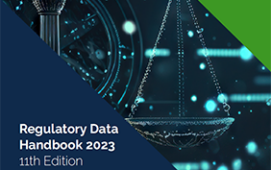NYSE Euronext’s adoption of Bloomberg’s open-source security identifiers is aimed at setting the pace for industry change within the symbology segment, in the hopes of broadening client choice and reducing customer cost. The exchange operator, which provides a range of data feed services, is first adding the Bloomberg Open Symbology (Bsym) codes to its OpenBook data feed and later expanding coverage to all of its data feed products globally.
NYSE Euronext opened discussions with Bloomberg under a non-disclosure agreement last December, just a month after Bloomberg introduced its open symbology. The two maintain the development is not a shot across the bow of Thomson Reuters, whose Reuters Instrument Code (RIC) symbol set has been the subject of a regulatory anti-competition investigation. Rather, they say, it’s a response to customer demand for change and a step towards a more open and competitive reference data market.
According to Larry Leibowitz, chief operating officer at NYSE Euronext, “An open source, truly integrated solution for market data distribution is long overdue. Taking the lead in providing a global uniform standard demonstrates our joint commitment to move the industry forward by providing increased transparency and improved access while lowering costs.”
NYSE Euronext will initially add Bloomberg Bsym codes to its OpenBook product and will then move on to distribute Bsym along with its standard security identifiers for New York Stock Exchange-listed companies across all its data products. This will provide standardisation and interoperability between NYSE Euronext’s data feeds and Bloomberg’s value-added content, giving market participants a greater choice of data at a lower cost.
Mark Schaedel, senior vice president of global data products at NYSE Euronext says: “Customers wanting to knit together various sources of data are dependent on security identifiers to do so, and have been vocal about the cost burden of licence agreements associated with these security identifiers. We want to help customers reduce the cost of interacting with our markets and believe open standards are what is needed.
“When Bloomberg published its open-source symbols, we approached the company to propose that we carry them in our data feeds. This applies the open symbology in a useful way, as the Bloomberg symbols are then already mapped to our own ticker symbols making data integration easy for customers. We hope this is a first step towards a change in industry practice.”
The NYSE Euronext and Bloomberg partnership means NYSE Euronext customers can quickly bring together the companies’ information sources, a process that Schaedel believes will be reiterated if other providers of proprietary security identifiers map to the Bsym codes.
Despite regulatory interest focussed on proprietary security identifiers and the question of whether Reuters’ RIC became anti-competitive after the company’s 2008 acquisition by Thomson, NYSE Euronext says its initiative with Bloomberg has no relation to what may happen at Thomson Reuters. Over time, it is even possible that Thomson Reuters could see the initiative as an opportunity to access customers that NYSE Euronext serves directly.
If providers of security identifiers do choose to follow the open source route, the benefit to customers of fewer licences and therefore lower costs will be significant. For data providers, the corollary could be a drop in revenue.
“This initiative is a win-win for everyone,” says Schaedel, “and presents security identifier providers with the opportunity to provide value-added content that can be easily integrated with data provided directly by exchanges to customers. Even if this is at the expense of some licensing revenue, we believe the ability to better integrate sources of content provides unique opportunities for users.
“This type of innovation is what drives growth in the data business. The interest we have already received from other providers suggests more will join in and we will see the change we are hoping for. “If there is a move to open source in the security identifier space, we believe it will lower the barrier to entry for smaller customers wanting to use a broader array of content to achieve competitive advantage. Our interest is in creating the broadest market for our data.”
NYSE Euronext acknowledges it has ruffled the feathers of some providers of proprietary security identifiers that are its distribution partners, but says it would not have embarked on the project if it did not perceive a positive outcome for customers and the market.
“We have not solved the problems related to proprietary security identifiers,” says Schaedel, “but we have scratched the surface. Our initiative is one possibility to address the problems, but it is a gesture more than anything else as the market will decide how this evolves.”
Subscribe to our newsletter




